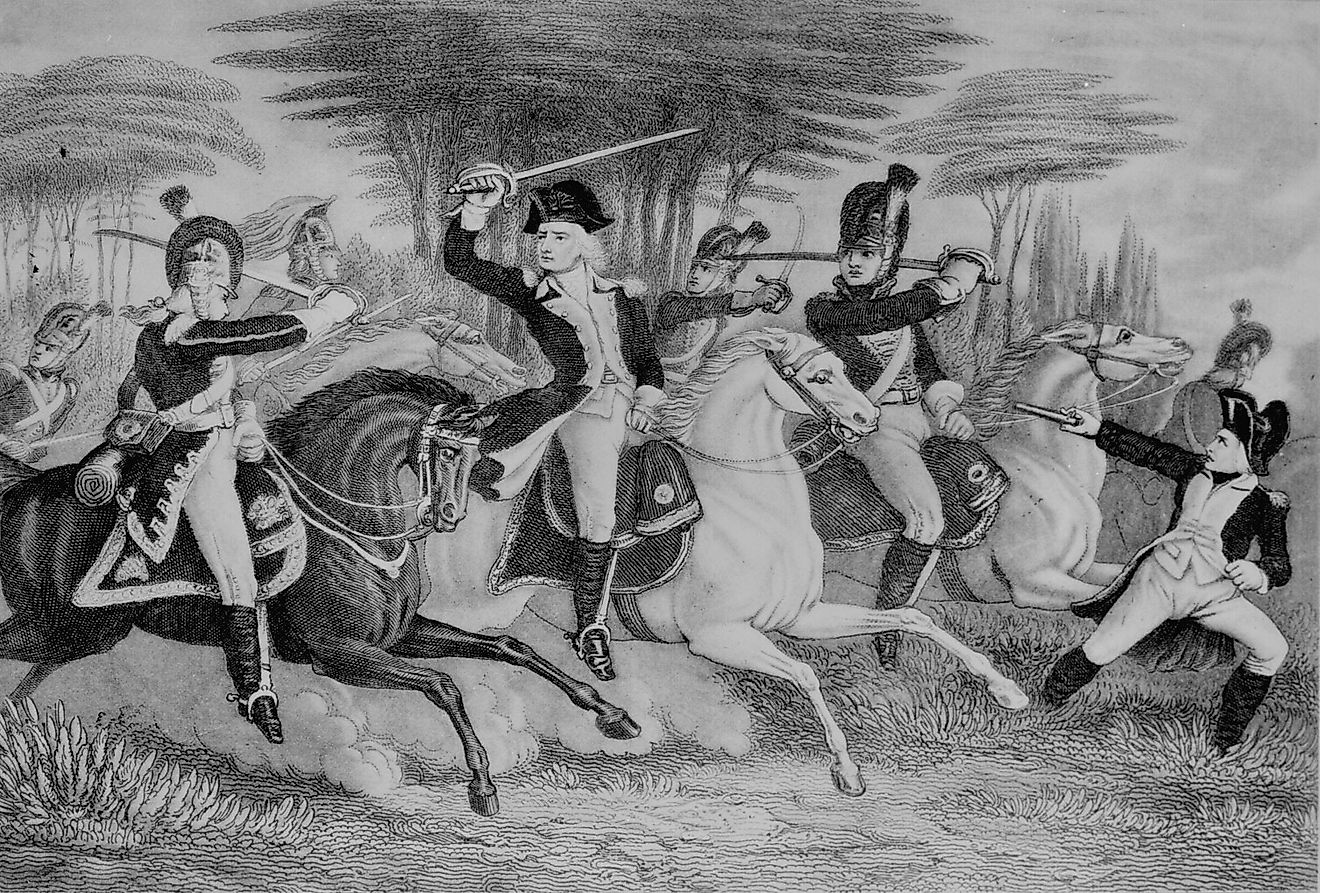The Battle of Cowpens: The American Revolutionary War

5. Background
Three months prior to the Battle of Cowpens, the Americans had gained massive victory over the British at nearby Kings Mountains. The Americans emerged victorious in the Battle of Camden and as a result General Cornwallis was forced to retreat from Charlotte, North Carolina. Meanwhile, General Nathanael Greene was then moved to the South and was tasked with the responsibility of mounting further resistance to General Cornwallis. Nathanael Greene sourced militias from all the directions and made a march towards General Cornwallis.
4. Makeup
The Continental forces were led by Brigadier General Daniel Morgan. The British were led by Colonel Banastre Tarleton, who was in direct communication with General Cornwallis, who was orchestrating much of the Southern Campaign for the British. Most estimates place each sides forces at around 1,000-men-strong, with the British force being somewhat larger, making it a small affair in terms of manpower relative to its significance to the war at large.
3. Description
The battle unfolded in Cherokee County, South Carolina at a point adjacent to the town of Cowpens, from where the battle derived its name. General Greene divided his army into two sections, and General Morgan was sent to encounter Cornwallis from the opposite side of the battlefield. The Continentals purposely left flanks unexposed to draw the British into vulnerable positions, and the British took the bait. One of General Cornwallis’ plans was to meet the attack by General Morgan by sending forces that were under the guidance of Colonel Banastre Tarleton. The result was a routing of the British forces at the hands of the Americans.
2. Outcome
Of the two warring factions, estimates show that the British suffered the most casualties, including a loss of a total of 39 officers. Sixty soldiers lost their lives while as many as 829 of them were captured out of the 1,150 who arrived to fight the Americans. The Americans, on the other hand, had a more successful fighting strategy and this saved them from the massive loss of life that the British encountered during the battle. Only 12 of the approximately 1,000 men from the Continental Army involved in the battle died. In addition to the overwhelming victory realized by the Americans that day, the battle saw British gunnery seized and hundreds of “Redcoats” captured. The battle defined a turning point which saw the British presence throughout South Carolina and much of the Southern Colonies overturned.
1. Significance
In comparison to other battles fought during the American Revolution, the Battle of Cowpens can be regarded as being relatively small in the sizes of the parties involved. However, the impact of the battle on the future of the American Colonies was a significant one. The Battle of Cowpens proved to be pivotal in that it further adversely impacted on the British plans for the south. The patriotic cause among the many people who were fighting the British gained momentum and this kind of feeling played a massive role in removing the small British army and relieving much of the burden from General Greene’s command. Before the Battle of Cowpens, warfare in the southern colonies at most times ended in stalemates as no side was able to launch a massive offensive against the other. The aftermath of this battle was that the British had a lost a lot of control of the southern colonies to the Americans. The loyalists who heavily relied on the British to mount a strong defense against the Continental Army were on the other hand demoralized by the outcome of this war. Two US Navy Ships have held the moniker of USS Cowpens: an Independence-class light aircraft carrier that was launched in World War II, and a Ticonderoga-class cruiser equipped for launching guided missiles that is still in active service today. The battlefield is maintained today by the US National Park Service as Cowpens National Battlefield.











